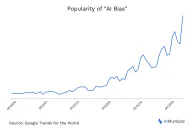Healthcare systems are under growing pressure from rising patient data and demand for personalized care. A recent study found that 154 of 290 hospital referral regions (53%) experienced workload imbalances, highlighting the strain on resources and the need for more efficient solutions.1
Healthcare AI systems have emerged as a powerful solution, optimizing processes, enhancing diagnostic accuracy, and improving patient outcomes.
Check out the top 22 healthcare AI use cases with real-life examples.
Patient Care
1. Assisted diagnosis & prescription
AI-powered chatbots can assist patients with self-diagnosis for mild conditions or help doctors with diagnosis based on symptoms, medical history, and diagnostic data.
A study designed to evaluate how well ChatGPT can diagnose conditions and how often it recommends seeing a doctor found mixed results regarding its reliability for diagnosis.
Over five days, the researchers asked ChatGPT the same questions about five common orthopedic conditions. The answers were marked as correct, partially correct, incorrect, or as a list of possible diagnoses. The accuracy and consistency of the answers were measured, and ChatGPT’s ability to accurately diagnose orthopedic conditions was inconsistent.
Also, its recommendations to seek medical care were not always strong. ChatGPT could be useful as a first step, but there’s a risk in relying on it for self-diagnosis without proper medical advice.2
2. Customer service chatbots in healthcare
Customer service chatbots can answer patient questions about appointments, billing, or medication refills.
This can improve the speed and accuracy of diagnoses, reduce the workload on healthcare providers, and allow for better allocation of resources. Doctors can focus on more complex cases, while AI tools provide initial assessments or second opinions for routine ones.
3. AI agents in healthcare
AI agents help in healthcare by automating tasks, improving decision-making, and enhancing patient care. They analyze medical data for diagnosis, suggest personalized treatments, predict outcomes, and manage administrative tasks.
AI also enables real-time monitoring and virtual consultations, boosting efficiency and reducing errors.
Real-life example
Sully.ai: Parikh Health, led by Dr. Neesheet Parikh, has greatly enhanced its operations and patient care through the integration of Sully.ai with their Electronic Medical Records (EMRs).
The AI-driven check-in system personalizes patient interactions, while automation of front desk tasks allows staff to focus more on patient care.
This collaboration with Sully.ai reduced operations per patient by 10x and cutting the time spent on administrative tasks, such as patient chart management, from 15 minutes to just 1-5 minutes. This has led to a 3x increase in efficiency and speed.
Additionally, the platform has reduced physician burnout by 90%, enabling more focused and meaningful patient interactions.
4. Prescription auditing
AI technology helps healthcare providers reduce prescription errors by analyzing prescriptions for drug interactions, incorrect dosages, or potential patient allergies.
This reduces the risk of adverse drug events, a significant source of complications and costs in healthcare.
5. Pregnancy management
AI systems can be employed to monitor the health of both mother and fetus through wearable devices and remote monitoring systems.
These tools leverage data from vitals and other metrics to predict and diagnose potential complications early. This improves pregnancy outcomes and reduces maternal and infant mortality rates.
6. Real-time prioritization triage
AI-based prescriptive analytics can analyze patient data such as symptoms, medical history, and vitals to help healthcare professionals prioritize cases in real time.
Real-life examples
Lightbeam Health: Lightbeam Health leverages predictive analytics to foresee health risks in patients.
It analyzes over 4,500 factors, including clinical, social, and environmental determinants, to identify hidden risks. The system also provides prescriptive recommendations for targeted interventions that improve patient outcomes, such as reducing readmissions and emergency visits.3
Wellframe: Wellframe enables healthcare professionals to deliver personalized, interactive care programs directly to patients through a mobile app. The platform’s clinical modules are built based on evidence-based care to ensure that patients receive guidance from proven medical practices.
The app also supports real-time communication between care teams and patients for continuous monitoring and immediate intervention when needed.
Healthcare professionals can customize the experience for each patient while addressing individual health conditions such as chronic disease management or post-discharge follow-up.
Wellframe’s AI technology provides patients with tailored care plans and also equips clinicians with data insights through a dashboard. This real-time information helps prioritize high-risk patients and facilitates more efficient healthcare delivery.
Wellframe enables better patient outcomes through these capabilities, supports preventive care, and provides more personalized relationships between patients and their care teams.4
7. Real-time triage
Integrating AI for prioritization ensures that the most critical cases are treated first, which would enhance emergency room efficiency and lead to improved patient outcomes.
Real-life example
Enlitic: Enlitic’s patient triaging solutions leverage AI technologies to enhance the efficiency of healthcare systems by scanning incoming medical cases and assessing them for multiple clinical findings.
These findings are then prioritized, ensuring that the most urgent cases are routed to the appropriate healthcare professionals in the network. This process allows healthcare professionals to address high-priority cases faster, improving overall patient care and reducing delays in diagnosis and treatment.
By utilizing AI to automate the triage process, Enlitic’s solutions help reduce the manual burden on clinicians and manage workflows, specifically in radiology. The platform also increases health data quality by standardizing medical imaging data, which ensures that images are correctly labeled and routed.5
8. Personalized medications and care
AI enables the development of personalized treatment plans by analyzing individual patient data, including genetic information, lifestyle, and medical history. Personalized medicine helps improve treatment efficacy, reduce side effects, and lower healthcare costs by avoiding unnecessary treatments and focusing on the best outcomes for each patient.
AI in healthcare tools can help users find the best treatment plans based on their patient data, thus reducing cost and increasing the effectiveness of care.
Real-life examples
Aitia: The company uses machine learning to match the patients with the treatments that are most effective for them.6
Oncora Medicals: Oncora can analyze and learn from health systems’ data to enable personalized treatment ,specifically for cancer patients.7
9. Patient data analytics
Healthcare analytics solutions can derive insights from clinical data to provide healthcare professionals with recommendations for improving patient care, identifying at-risk populations, and optimizing resource allocation. This approach helps reduce care costs while enhancing patient outcomes through more informed decision-making.
Real-life example
Zakipoint Health: Zakipoint Health provides a comprehensive dashboard designed to give a transparent view of each member’s healthcare risks and costs. This approach enables tailored interventions to improve health outcomes.
The platform leverages predictive analytics to identify cost drivers and risk factors, helping healthcare systems to reduce healthcare risks and achieve cost savings.8
10. Surgical robots
Robot-assisted surgeries combine AI and collaborative robots. These tools assist in procedures requiring precision and repetition, such as laparoscopic surgery.
These robots can follow predefined movements without fatigue and improve accuracy with high precision. This helps reduce the risk of human error, speeds up recovery times, and allows surgeons to perform more complex procedures with high accuracy.

Figure 1: Robotic surgery example.9
10. Assistive robotics
Assistive robotics in healthcare enhances patient care and supports medical professionals by performing tasks using sensors, actuators, and intelligent control systems.
Assistive robotics applications include exoskeletons that aid rehabilitation for stroke or spinal injury patients and robotic medication dispensers that ensure accurate dosing. Telepresence robots enable remote consultations, and robotic nursing assistants like Robear help lift or move patients safely.
These technologies improve efficiency, accuracy, and patient outcomes in various clinical settings.
Real-life example
The LUCAS 3 is a mechanical chest compression system developed by Stryker. It delivers consistent, high-quality compressions during cardiopulmonary resuscitation (CPR), helping maintain blood flow in cardiac arrest patients (See the image below).
The device is portable, battery-powered, and designed for use in ambulances, hospitals, or emergency scenes.
It reduces the physical burden on responders and improves CPR outcomes by ensuring uninterrupted compressions, even during transport or defibrillation.

Figure 2: LUCAS 3 chest compression system.10
Medical imaging and diagnosis
12. Early diagnosis
AI can analyze medical records, lab data, and imaging results to detect early signs of chronic diseases such as cancer, diabetes, or cardiovascular conditions. Early diagnosis leads to timely interventions, which can improve patient outcomes and reduce long-term treatment costs.
Real-life example
Ezra: Ezra leverages AI while analyzing full-body MRI scans to support clinicians in the early detection of cancer.11
13. Medical imaging insights
AI-driven tools can enhance the analysis of medical images (e.g., X-rays, MRIs, CT scans) by identifying patterns that human radiologists may miss. These insights help in diagnosing diseases earlier and more accurately.
AI is also being used to diagnose COVID-19 from imaging data, enabling quicker identification of critical cases that need ventilator support.
AI-powered medical imaging is also widely used in diagnosing COVID-19 cases and identifying patients who require ventilator support.
Real-life examples
Huiying Medical: Huiying Medical, a medical device company located in China, created an AI imaging solution capable of detecting COVID-19 using CT chest scans. According to the company, this solution could benefit areas lacking access to RT-PCR, the standard COVID-19 testing method.
Huiying developed the AI algorithms using CT data from over 4,000 coronavirus cases. The system examines ground-glass opacity (GGO) in the lungs, a sign of partial air space filling, along with other indicators, to assess the likelihood of COVID-19 infection.12
SkinVision: SkinVision’s app enables patients to detect early signs of skin cancer by using their smartphones. By allowing users to take high-quality photos of their skin, focusing on suspicious moles or lesions, the apps can analyze them with AI algorithms.
This analysis provides an instant risk assessment, which can help identify potential concerns such as melanoma, squamous cell carcinoma, or basal cell carcinoma.
SkinVision’s algorithms have been trained on a vast database of dermatological images to help distinguish between high-risk and low-risk skin conditions. For high-risk assessments, the app recommends professional medical consultation.13
Research and development
14. Drug discovery
AI accelerates drug discovery by analyzing large datasets from medical research, historical treatment data, and biological pathways. This leads to faster identification of promising drug candidates and reduces the cost and time required to bring new drugs to market.
AI technology can also predict the efficacy of drugs, which would lead to better outcomes in clinical trials.
Real-life examples
NuMedii: Biopharma company NuMedii has built the AIDD (Artificial Intelligence for Drug Discovery) technology that leverages Big Data and AI to rapidly discover connections between drugs and diseases at a systematic level.14
Insilico Medicine: Insilico Medicine, a biotech firm headquartered in Boston and Hong Kong, has announced a milestone in AI-driven drug development.
Their lead compound, rentosertib, designed entirely using artificial intelligence, has demonstrated promising results in a mid-stage clinical trial for idiopathic pulmonary fibrosis (IPF), a progressive and currently incurable lung disease.
In the study, patients receiving the highest dose of rentosertib showed notable improvements in lung function. Biomarker analyses confirmed that the drug effectively targeted a specific protein associated with IPF, as predicted by Insilico’s AI algorithms.15
15. Gene analysis and editing
AI assists in analyzing genetic data to understand genetic variations and predict the effects of gene editing.
This technology also helps researchers predict how specific gene edits might impact disease risk or treatment outcomes, enabling more precise and effective genetic therapies.
Real-life example
SOPHiA GENETICS: SOPHiA GENETICS offers geneticists the SOPHiA DDM™ platform, which uses AI to improve genomic analysis. The platform automates the detection, annotation, and prioritization of complex variants in next-generation sequencing (NGS) data, leading to quicker and more accurate insights.
It integrates into existing lab environments, facilitates collaboration through a global expert network, and includes tools like Alamut™ Visual Plus for detailed variant analysis.
The MaxCare Program also offers support with on-site consultations, training, and performance evaluations to ensure successful implementation.16
16. Device and drug comparative effectiveness
AI can evaluate and compare the effectiveness of different medical devices or drugs by analyzing clinical outcomes and patient data.
This helps healthcare providers make more informed choices about the most effective treatments while reducing trial-and-error in medical interventions.
Real-life example
4Quant: 4Quant leverages big data analytics and deep learning technology to extract meaningful insights from images and videos, supporting the design and optimization of experiments. Their platform applies machine learning algorithms to process vast amounts of visual data for researchers and healthcare professionals to analyze complex information effectively.
By automating the extraction of actionable insights from imaging data, 4Quant allows users to identify key components and patterns that are most relevant to their specific experimental needs. This can be particularly valuable in fields such as scientific research, medicine, and industrial applications, where analyzing visual data is critical to decision-making.
4Quant’s solutions also offer customization based on specific user requirements for more targeted analyses. This approach reduces the time and effort required to analyze large datasets and improves the precision and quality of the insights.17
Healthcare management
17. Brand management and marketing
AI platforms can analyze healthcare market perception and patient demographics to help medical professionals optimize their marketing strategies. Hospitals and healthcare organizations can enhance their brand reputation by tailoring messages and targeting the right segments.
18. Pricing and risk
AI models can predict the optimal pricing for treatments and services by analyzing competition, market demand, and patient outcomes.
This helps healthcare providers set competitive yet profitable prices while reducing patients’ financial burden and optimizing operational margins.
19. Market research
AI can be used to gather competitive intelligence on other hospitals or healthcare providers. This data enables hospitals to benchmark their services, identify areas of improvement, and adapt to changes in the healthcare market landscape.
Real-life example
MD Analytics: MD analytics is a health and pharmaceutical marketing research solution. The tool offers a wide range of quantitative and qualitative research solutions tailored to each phase of a product’s lifecycle.
Their services cover clinical trials, market assessments, patient journey analysis, and buying process evaluations. Pre-launch solutions include demand forecasting, concept testing, pricing research, and patient support program assessments. Post-launch and growth phases focus on customer engagement, sales force evaluations, multi-channel optimization, and tracking KPIs.18
20. Operations
Process automation technologies such as intelligent automation and RPA can manage healthcare operations such as scheduling, billing, and reporting. By automating routine tasks, healthcare providers can free up staff to focus on patient care while reducing administrative costs.
21. Fraud detection
AI tools can analyze patterns in healthcare claims to detect fraudulent activities such as false claims or over-billing. This helps healthcare organizations minimize losses from fraud and ensures that resources are used more efficiently for patient care.
Real-life example
Markovate: A national health insurance provider faced increasing fraudulent claims and data breaches, leading to financial losses and compromised patient privacy.
Markovate19 implemented an AI-based fraud detection system that analyzed claims data, flagged suspicious behaviors, and integrated seamlessly with the provider’s infrastructure, ensuring HIPAA compliance and safeguarding sensitive patient data.
The results are:
- 30% reduction in fraudulent claims within six months.
- 25% improvement in data security.
- 40% faster claims processing, boosting efficiency.
Hyperautomation in healthcare
Hyperautomation is an emerging approach to digital transformation that involves automating every business process possible while digitally augmenting those processes that cannot be fully automated.
Hyperautomation combines AI, RPA, and computer vision technologies for end-to-end process automation in healthcare.
Here are hyperautomation use cases in healthcare:
22. Health insurance processing
By leveraging NLP methods and AI/deep learning models, a hyperautomation approach can help health insurance businesses:
- Minimize manual work during preauthorization and claims processing,
- Reduce human errors,
- Detect and prevent healthcare fraud more accurately,
- Ensure customer satisfaction with shorter claims cycles.
23. Regulatory compliance
Healthcare providers, health insurance companies, pharmacies, and other healthcare entities must comply with regulations such as HIPAA in the US and GDPR in the EU.
Hyperautomation can help with ensuring regulatory compliance for healthcare organizations:
- Intelligent bots can log every action in healthcare systems and document the activity log when demanded,
- AI/ML models can be used to predict potential healthcare fraud,
- Automating internal audit processes can help evaluate risks and internal controls more efficiently and frequently.
Future of healthcare AI use cases
For the future of AI in healthcare, a machine learning-based solution can be built in areas where significant training data is available, and the problem statement can be formulated clearly.
In these areas, AI can benefit healthcare providers by enabling data-driven decision-making and time & cost savings.
External Links
- 1. Many Intensive Care Units Were Overloaded While Nearby Hospitals Had Excess Capacity During The COVID-19 Pandemic - PubMed.
- 2. Journal of Medical Internet Research - The Potential of ChatGPT as a Self-Diagnostic Tool in Common Orthopedic Diseases: Exploratory Study.
- 3. Healthcare AI - Lightbeam Health Solutions. Lightbeam Health Solutions
- 4. Wellframe - Digital Health Management. Wellframe, Inc.
- 5. Enlitic | Data Analytics for Healthcare | Healthcare Data Solutions. Enlitic, Inc
- 6. Discovering Next Generation Drugs with Gemini Digital Twins. Aitia Bio
- 7. Oncora Medical - Cancer Registry Assistant.
- 8. https://www.zakipointhealth.com/solutions
- 9. Autonomous Robot Improves Surgical Precision Using AI | NVIDIA Technical Blog. NVIDIA Technical Blog
- 10. LUCAS 3, v3.1 chest compression system | Stryker.
- 11. Full-Body MRI Screening Service by Ezra. Ezra
- 12. Huiying Medical claims its AI can detect coronavirus from CT scans with 96% accuracy | VentureBeat. VentureBeat
- 13. SkinVision | Skin Cancer Detection App.
- 14. NuMedii – Disrupting Drug Discovery Using Big Data and Artificial Intelligence.
- 15. AI drug startup Insilico Medicine touts promising advance in treating lung disease. The Boston Globe
- 16. Geneticists - SOPHiA GENETICS. SOPHiA GENETICS
- 17. 4Quant: Turning Images into Information.
- 18. Health and Pharmaceutical Market Research | MD Analytics ULC. MD Analytics Inc.
- 19. Healthcare Fraud Detection and Security - Markovate. Markovate



Comments
Your email address will not be published. All fields are required.